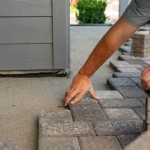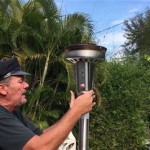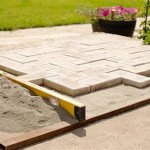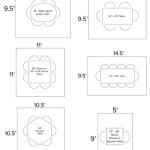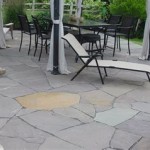Concrete Patio Drainage Solutions
A concrete patio is a beautiful and durable addition to any home, providing a spacious outdoor living area for relaxation, entertaining, and dining. However, without proper drainage, a concrete patio can become a breeding ground for mosquitoes, generate unsightly puddles, and even lead to structural damage. Understanding and implementing effective drainage solutions are crucial to ensure a dry and functional patio that enhances your outdoor enjoyment.
1. Slope for Drainage
The most fundamental aspect of concrete patio drainage is ensuring a proper slope. A gentle slope, typically around ¼ inch per foot, should be incorporated during the construction phase. This slope directs water away from the patio, preventing it from pooling on the surface. The slope can be achieved by adjusting the foundation level or by using a leveling tool during concrete pouring. A slight slope towards a designated drainage point, such as a downspout or a storm drain, is essential for effective water runoff.
2. Trench Drain Systems
Trench drains provide a highly efficient and aesthetically pleasing drainage solution for concrete patios. These systems consist of a long, narrow trench that runs along the perimeter of the patio or strategically placed within the area. Trench drains are typically made of concrete, PVC, or stainless steel, and they come in various sizes and styles to match the patio's design. The trench is covered with a grate that blends seamlessly with the surrounding concrete, while the drain itself collects water and directs it to a designated point, such as a storm drain or a dry well.
Trench drains offer several advantages: they effectively handle large volumes of water, prevent standing water and potential mosquito breeding, and are easily integrated into the patio design. Additionally, trench drains can be fitted with various accessories, such as drainage channels, filter baskets, and cleanouts, to enhance performance and ease maintenance.
3. French Drains
French drains provide a discreet and effective method for draining water away from a concrete patio. These systems consist of a perforated pipe buried beneath the patio surface, typically surrounded by gravel or crushed stone. The pipe collects water from the patio and directs it to a designated location, such as a dry well or a downspout.
French drains are particularly suitable for patios located in areas with heavy rainfall or clay soil, where water tends to pool. The gravel surrounding the pipe acts as a filter, preventing debris from clogging the drain. French drains are typically installed during the construction phase, requiring excavation and backfilling with gravel. It's crucial to ensure proper grading and slope to ensure effective water flow towards the designated drainage point.
4. Dry Wells
Dry wells, also known as infiltration basins, are underground structures designed to absorb excess water from a patio drainage system. They are typically constructed with concrete blocks or other porous materials to allow water to seep into the surrounding soil. Dry wells are particularly useful in areas with high groundwater levels, where traditional drainage options like storm drains may not be feasible.
To ensure proper functioning, dry wells must be sized correctly to handle the expected water volume. The soil surrounding the dry well should be permeable to allow water infiltration. It's important to note that dry wells may require regular maintenance to prevent clogging and ensure their effectiveness. Regular inspection and cleaning can help maintain optimal drainage performance.
In addition to these primary drainage solutions, other techniques can further enhance water management around a concrete patio. These include:
- Downspout Extensions: Extending downspouts away from the patio prevents water from pooling around the foundation.
- Perimeter Gravel Beds: Installing a gravel bed around the perimeter of the patio helps direct water away from the surface.
- Permeable Pavers: Using permeable pavers for walkways or surrounding areas allows water to infiltrate the ground instead of pooling on the surface.
By implementing these drainage solutions, homeowners can ensure a dry and functional concrete patio that enhances outdoor enjoyment and complements the surrounding landscape. Regular inspection and maintenance of these systems are crucial to ensure their continued effectiveness and prevent any water-related issues.

The Best Patio Drainage Options Solutions

Putting Drainage In An Existing Patio Home Logic

4 Solutions To Concrete Patio Drainage Problems

Retrofitting Plastic Patio Drains Trench Drain Com

Patio Drainage Issues

Patio Drainage System Solutions For Hard Surfaces Expert Advice Buckinghamshire Landscape Gardeners

Concrete Patio Drainage Solutions To Stop Pooling Water Network

6 Ways To Boost Your Yard Drainage Johnson S Landscaping Service

Patio Drainage System Solutions For Hard Surfaces Expert Advice Buckinghamshire Landscape Gardeners

Channel Drain Guide Options Ideas And Information
Related Posts

